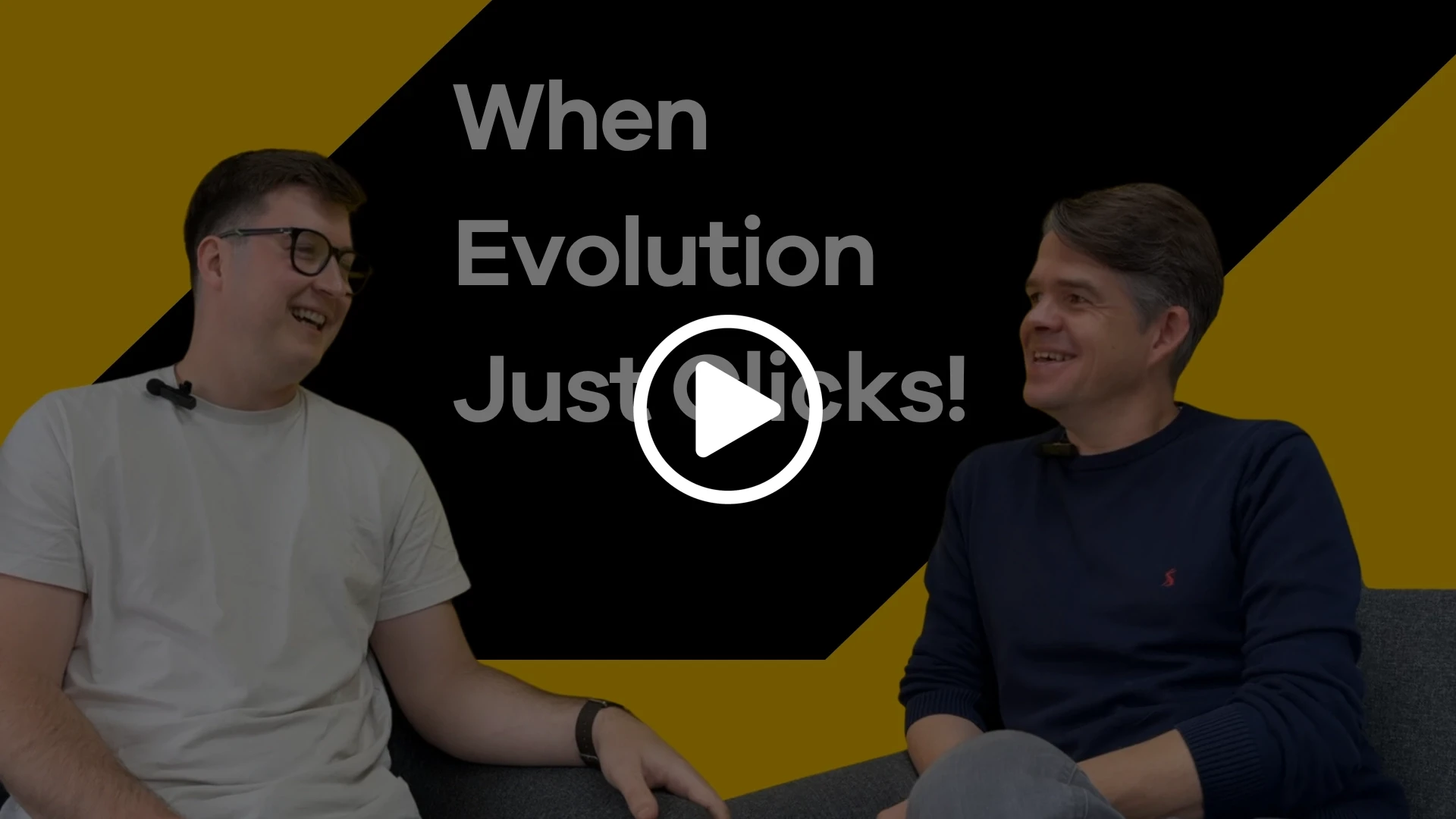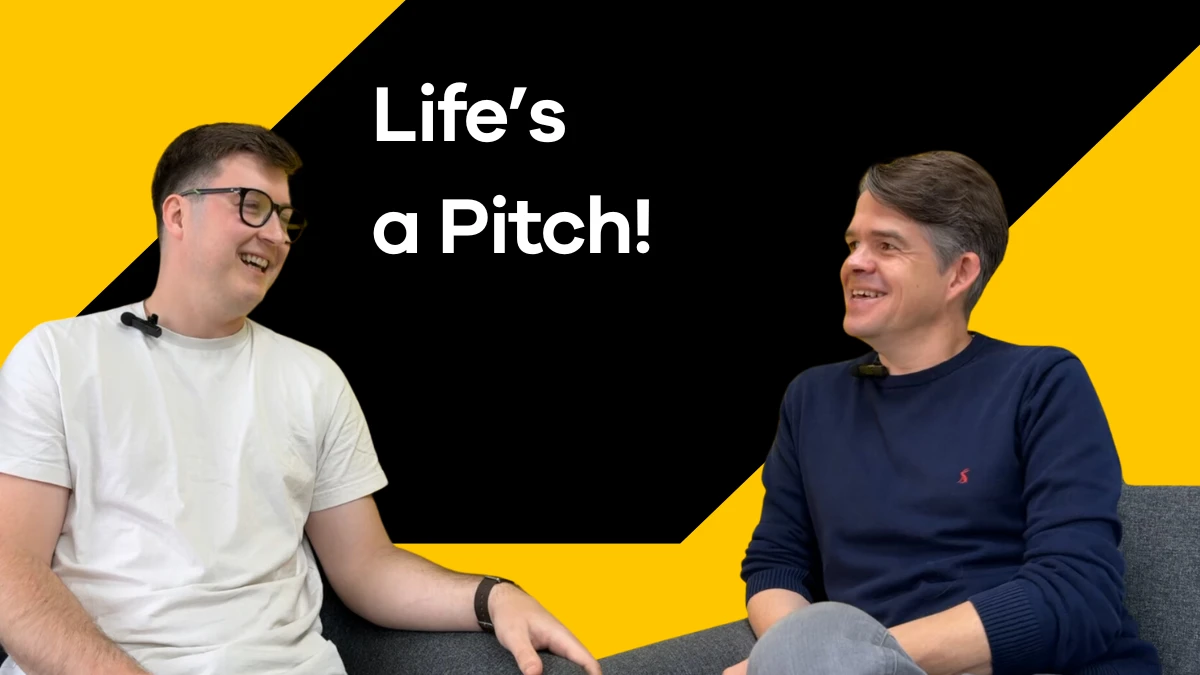
Eyeweb
Unplugged:
When Evolution Just Clicks | Episode 1 | Eyeweb Unplugged
Remember when websites looked like a digital version of a business card? No mobile responsiveness. No user journey planning. And what even was SEO strategy? Websites were just a few pages online, so you could say, “We’ve got a website.”
Fast forward to now, and the whole game has changed. In this episode, we talked about how websites have evolved from being an afterthought to becoming a central part of a company’s marketing strategy. We also explored why it’s not enough to just have a website. You need to understand what it’s for, who it’s for, and how it’s going to deliver results.
About the episode
From Space to Online Transformation
The biggest shift we’ve seen in recent years is how seriously businesses now take their websites. Twenty years ago, a website was little more than a digital placeholder. People were still using desktop computers. Mobile phones weren’t even part of the conversation. And few businesses understood how websites could actually help with sales.
Today, things are very different. A good website is a core business asset. It’s where people go to check you out, judge your credibility, and decide whether they want to work with you. For smaller businesses going through digital transformation, getting online used to be the end goal. Now, it’s just the beginning.
Why Do You Even Want a Website?
This might sound like an odd question coming from a digital agency, but it’s one we ask all the time. And the answer tells us everything.
It’s not unusual for a business owner to come in and say, “We want a website, but we don’t want anything too fussy.” But once we dig deeper, it becomes clear that what they really want is more brand awareness, more leads, or more sales. That’s a completely different conversation.
A website on its own won’t deliver those results. It’s like setting up a brilliant shop in the middle of nowhere and hoping someone wanders in. If no one knows it exists, it won’t perform. The strategy needs to come first.
Looking at the Whole Funnel
This is where the marketing funnel comes into play. It’s something we talk about a lot with clients, especially those who’ve heard the term but aren’t quite sure what it means.
In simple terms, the funnel has three key stages:
Awareness — helping people discover your business
Consideration — giving them reasons to learn more or compare options
Conversion — turning interest into action
Your website has a role to play in every stage. It’s not just about closing the sale. It should attract the right people, hold their attention, and give them enough confidence to take the next step. Without a wider strategy behind it, even the best-designed website will struggle.
The COVID Effect
There’s no doubt that COVID sped up digital transformation for a lot of businesses. When in-person sales dropped off, a strong online presence suddenly became essential.
Some of our clients saw it as a moment to push ahead. One told us, “While my competitors are sitting back, I want to move forward.” That approach made a huge difference. The demand for remote services and digital engagement wasn’t temporary. It created a permanent shift in how people buy and research products and services.
Since then, clients have been arriving with a better grasp of what marketing involves. They might not have all the jargon down, but they know how important strategy is.
From Supplier to Partner
Our approach has shifted too. We no longer see ourselves as just service providers. Our role is to act as a partner who supports your business throughout the journey.
That means regular meetings, ongoing strategy discussions, and constant tweaks to improve performance. We don’t just hand over a finished product. We help you use it properly and adapt it as your business evolves.
It’s also great to see how clients develop. In the beginning, some don’t know what bounce rate means or why conversions matter. A few months later, they’re asking questions, reviewing reports, and using the data to inform decisions. That’s the kind of progress we love to see.
What Happens After the Enquiry?
Getting leads is only part of the puzzle. What happens next is just as important.
Lately, we’ve been helping clients focus more on their follow-up process. Are they storing enquiries in a CRM? Are they nurturing those leads over time? Or are they relying on memory and handwritten notes?
One client recently admitted they keep everything “in their head.” That might be fine for one or two contacts, but it’s not a sustainable way to grow. Following up, sending helpful reminders, or staying in touch through email marketing can turn early interest into real results.
A Digital Journey
Digital marketing isn’t something you finish. There’s no final box to tick. Even as a digital agency, we’re still constantly improving, adjusting, and learning.
It’s easy to feel overwhelmed when you look at everything involved — SE0O, PPC, email campaigns, social media, automation, analytics. But the key is to focus on what matters most right now, build a strong foundation, and then grow from there.
The most successful businesses we work with don’t try to do everything at once. They take it step by step, stay open to change, and keep refining their strategy.
Final Thoughts
If you’re still thinking of your website as a stand-alone asset, it might be time to take a step back and look at the bigger picture.
Your website should be part of your wider marketing engine. It needs to connect with your audience, reflect your goals, and support everything else you’re doing to grow the business.
Whether you’re just getting started or already have a few pieces in place, it’s worth asking the bigger questions. What’s working? What’s missing? And what could be working harder?
Because great marketing isn’t about ticking boxes. It’s about building something that moves your business forward.
Life's a Pitch! | Episode 2 | Eyeweb Unplugged
In this episode, we stepped away from strategy and opened up about some of the early career moments that stick with you. The awkward meetings, the unexpected presentations, and the slip-ups that, at the time, felt awful but ended up shaping how we work today.



